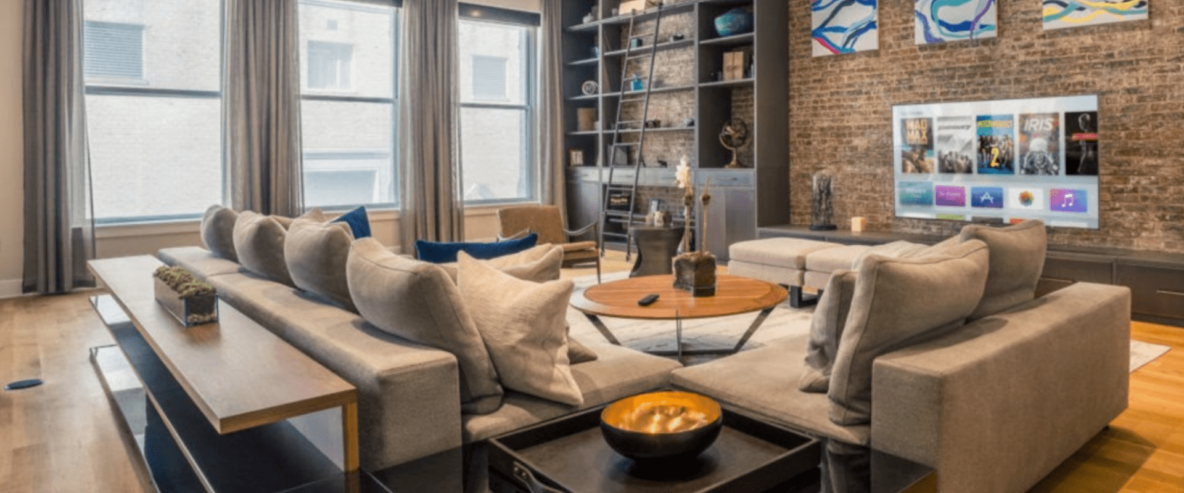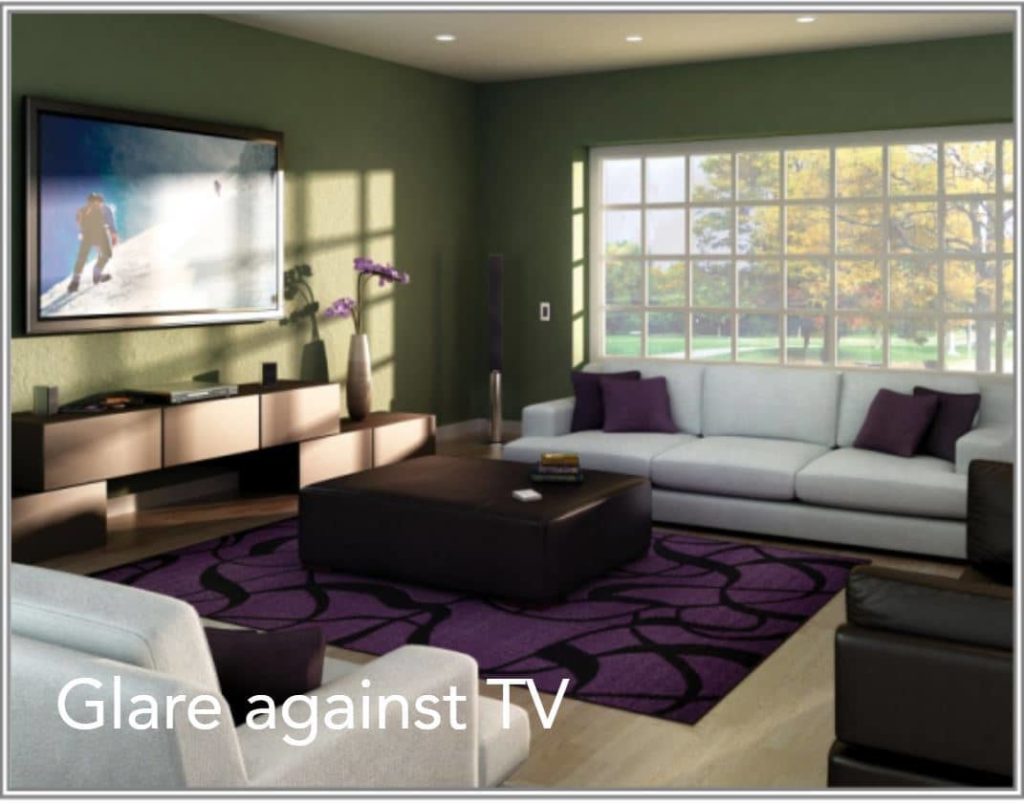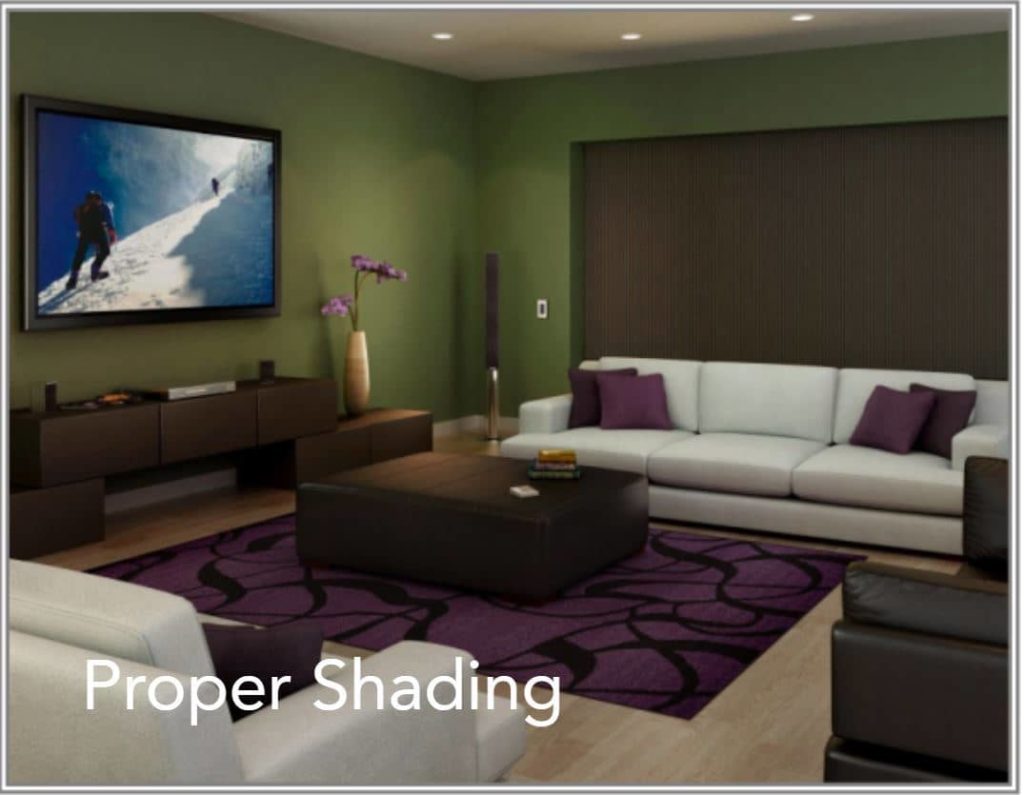Remember those clunky car phones of the 1990s? They were cool at the time but boy, has technology come a long way. The same goes for shading. Motorization used to be the latest innovation, but now those noisy, finicky shades are completely outdated. Motorization is hushed, and simply a starting point of fully automated shading technology.
Shading nowadays is an integral part of any smart home. They are capable of responding to light and heat, operating on a timer or from a central device in the home, and increasing home security and energy efficiency. Keep reading for an in-depth guide from our team on smart shading.
1. Daylight factors
Your home’s lighting needs are unique, and the more you understand them, the more enjoyment you’ll get out of choosing a shade that works for you. Depending on the time of day or season, your needs could vary greatly. So let’s ask, does the lighting that’s washing your living room fall into one of these three descriptions?

- Direct – a beam or beams of light are shining on certain objects in the room;
- Reflected – a beam of light is shining indirectly on to certain spots;
- Diffused – light is spread throughout the space, without focus on any particular spot.
Also consider how these factors may impact your ability to enjoy the space:
- The location of the windows;
- The size and number of windows;
- The type of windows and use of shades or drapes.
2. Why shading?
Design. Smart shading can enhance a sleek and modern home design. With nearly 8 different types to choose from, there are options for all different areas of the home, as well as size, style and appearance.
Control and convenience. If it takes you enough time to manually pull down each and every shade in your home that it’s starting to feel like a hobby, we just want you to know that there’s a better way! We can help you control shading easily remotely from a mobile device or from a central system in the home. Shades can even respond to voice commands!
Energy and security. When you invest in your home, you want to make sure your assets are protected. Use shading to shield furnishings from exterior view, reduce glare, heat gain and UV damage in the home, and reduce HVAC costs by up to 10%.
3. Technology
Motorized shading used to be clunky, loud and full of issues, but that’s nothing like the modern options that are available to homeowners today. Shades that respond to heat and light are now the norm; they’re easy to customize, with options for silent motors and automatic timers, and are available in just about any style and size. No wonder they’ve become so popular! Here’s where you’ll find smart shading technology used in the home:
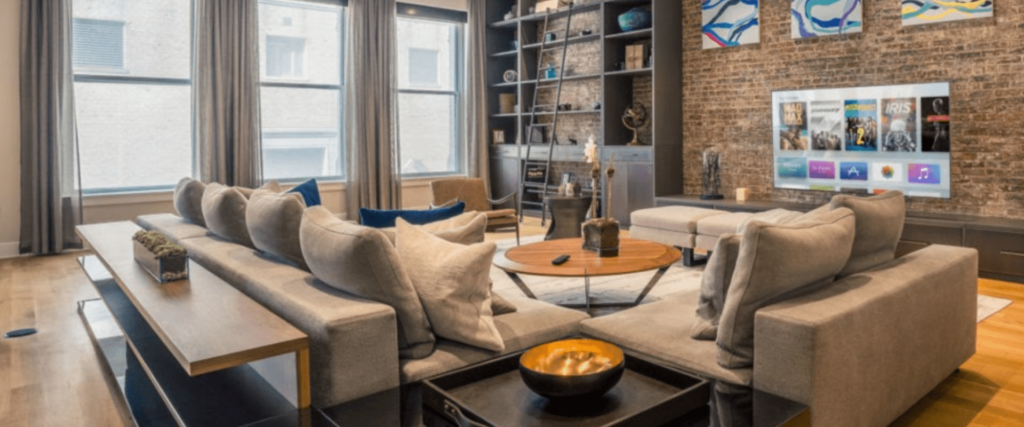
- Entertainment spaces. You wouldn’t use the same shade in the bedroom as you would in a space for entertainment. Take advantage of tech and automate shades to lower in response to sunlight or manually when it’s showtime. This level of customization means no more compromising on comfort!

- Remote and local operations. Regular shading can do half of the work, but with smart home technology, you can control the comfort and mood of each room from one central device, even when you’re away from home.
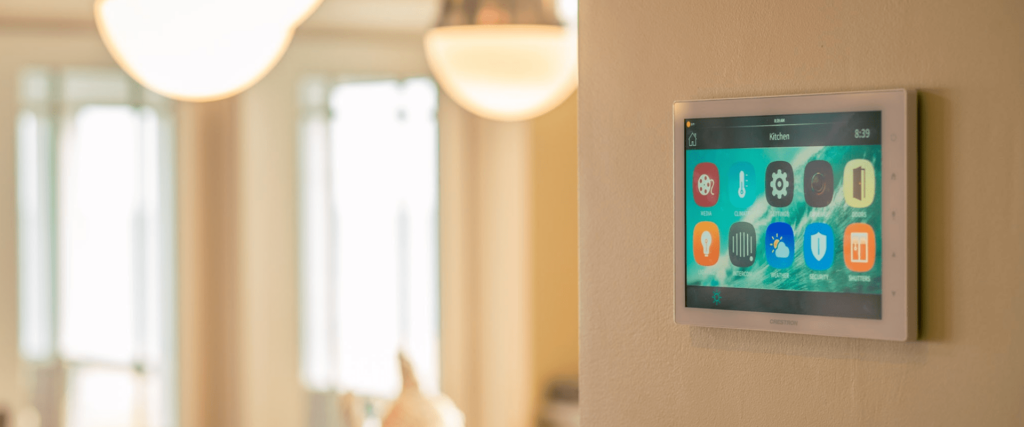
- Whole home and HVAC integration. If the shades are integrated with your smart home’s HVAC system, that means they can help keep your spaces comfortable and provide energy efficiency.

- Voice control. The shading system can be controlled manually or from a centrally located system, but it can also be programmed to recognize voice commands. This can be operated from an Amazon Alexa or another integrated system.

- Photocell technology. Shades that lower automatically in response to sunlight? Yes please! UV rays can do lasting damage to televisions, flooring and priceless antiques. A shading system that can determine intensity of sunlight can save homeowners from avoidable replacements such as these for years to come.

- Electric film. If you’re not willing to commit to shades, or you’re looking for a more understated option with similar results, electric film will give your window a frosted or transparent appearance without the use of shading. It combines the privacy you need with minimal impact to design.
4. What’s the right option for you?

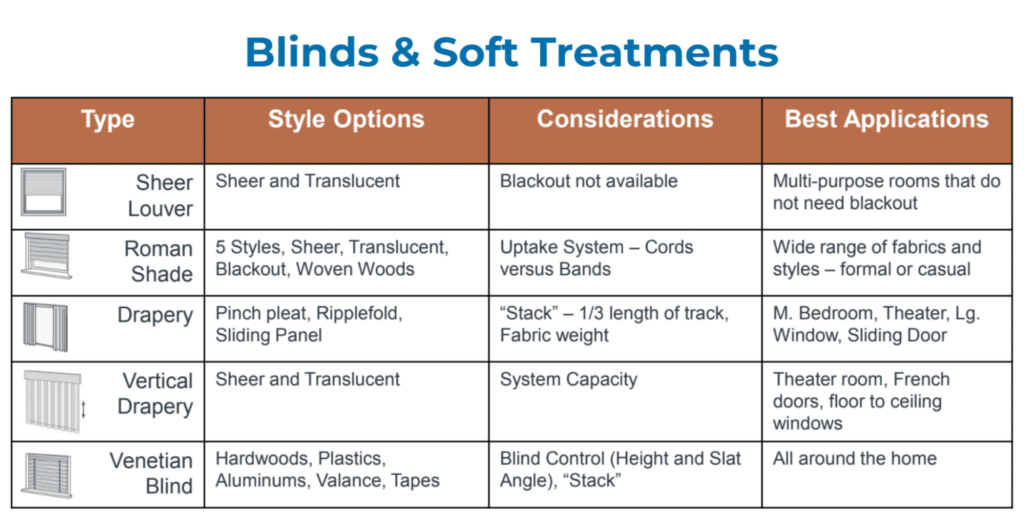
The first step to better shading, reduced energy costs, and heat gain is to choose the right treatment. Here’s what to look for – the perfect shading should maintain a uniform appearance with the rest of your home, accommodate your window sizes, minimize light gaps between shades and operate smoothly. For example, sheer louver shades may be a poor choice for a theatre room, but they’d be appropriate in a multipurpose room because they preserve the view outside and block only some sunlight. In the theatre room, a blackout shade would be best for the movie watching experience, whereas another sheer or translucent shade would be better suited for a living room or bedroom.
To get more specific info on types of shading, the benefits of smart shading in the home, and to learn how Casaplex can help, get in touch.

